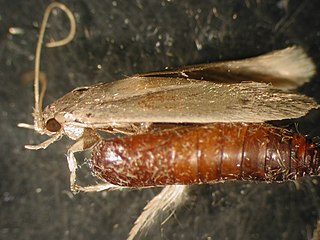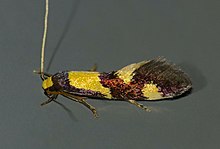
The Sahel region or Sahelian acacia savanna is a biogeographic region in Africa. It is the transition zone between the more humid Sudanian savannas to its south and the drier Sahara to the north. The Sahel has a hot steppe climate and stretches across the southernmost latitudes of North Africa between the Atlantic Ocean and the Red Sea. Although geographically located in the tropics, the Sahel does not have a tropical climate.

Gum arabic is a natural gum originally consisting of the hardened sap of two species of the Acacia tree, Senegalia senegal and Vachellia seyal. However, the term "gum arabic" does not actually indicate a particular botanical source. The gum is harvested commercially from wild trees, mostly in Sudan and throughout the Sahel, from Senegal to Somalia. The name "gum Arabic" was used in the Middle East at least as early as the 9th century. Gum arabic first found its way to Europe via Arabic ports, and so retained its name.

Acacia Fraternity, Inc. is a social fraternity founded in 1904 at the University of Michigan in Ann Arbor, Michigan. The fraternity has 27 active chapters and 3 associate chapters throughout Canada and the United States. The fraternity was founded by undergraduate Freemasons and was originally open only to men who had taken the Masonic obligations, but in 1933 the International Conclave elected to dispense with the Masonic prerequisite. In 1988, at the 45th Conclave, the fraternity elected to use "International" rather than "National" when referring to the fraternity.

Acacia Ridge is a southern suburb in the City of Brisbane, Queensland, Australia. In the 2016 census, Acacia Ridge had a population of 7,429 people.

Acacia auriculiformis, commonly known as auri, karuvel in Tamil Nadu and Karnataka and aakashmani in West Bengal, is a fast-growing, crooked, gnarly tree in the family Fabaceae. It is native to Australia, Philippines, Indonesia, and Papua New Guinea. It grows up to 30 metres (98 ft) tall. Acacia auriculiformis has about 47,000 seeds per kilogram (21,000/lb).

Acacia, commonly known as the wattles or acacias, is a genus of about 1084 species of shrubs and trees in the subfamily Mimosoideae of the pea family Fabaceae. Initially, it comprised a group of plant species native to Africa, South America and Australasia, but is now reserved for species mainly from Australia, with others from New Guinea, Southeast Asia and the Indian Ocean. The genus name is Neo-Latin, borrowed from the Greek ἀκακία, a term used by Dioscorides for a preparation extracted from the leaves and fruit pods of Vachellia nilotica, the original type of the genus. In his Pinax (1623), Gaspard Bauhin mentioned the Greek ἀκακία from Dioscorides as the origin of the Latin name.

Acacia melanoxylon, commonly known as the Australian blackwood, is an Acacia species native in South eastern Australia. The species is also known as blackwood, hickory, mudgerabah, Tasmanian blackwood, or blackwood acacia. The tree belongs to the Plurinerves section of Acacia and is one of the most wide-ranging tree species in eastern Australia and is quite variable mostly in the size and shape of the phyllodes.

Mitry-Mory is a commune in the Seine-et-Marne department in the Île-de-France region in north-central France. It is located in the north-eastern suburbs of Paris 24.4 km (15.2 mi) from the center just off the N2 national highway.

Opogona is a genus of the fungus moth family, Tineidae. Therein, it belongs to the subfamily Hieroxestinae. As it includes Opogona omoscopa, the type species of the now-abolished genus Hieroxestis, it is the type genus of its subfamily.
Comptella is a genus of sea snails, marine gastropod mollusks in the subfamily Pagodulinae of the family Muricidae, the murex snails or rock snails.

Opogona sacchari, the banana moth, is a moth of the family Tineidae. The species was first described by Wenceslas Bojer in 1856. It is native to the humid tropical and subtropical regions of sub-Saharan Africa, where it is also found in Madagascar, Mauritius, Réunion, Rodrigues Island, the Seychelles and St. Helena. It was first reported from the Canary Islands in the 1920s. In the 1970s, it was introduced into Brazil and Central America, and also appeared in Europe. It has been reported from Florida since 1986.
Opogona aurisquamosa is a moth of the family Tineidae. It has been recorded from the Pacific, including Easter Island, the Marquesas, the Society Islands, Fiji, the Kermadec Islands and Hawaii. It may have been dispersed by the Polynesians as well as by Europeans.

The Passion Flower is a 1921 American drama film starring Norma Talmadge, Courtenay Foote, and Eulalie Jensen, and directed by Herbert Brenon. It is based on the 1913 Spanish play The Unloved Woman by Jacinto Benavente. The play was translated into English by John Garrett Underhill as The Passion Flower and successfully produced in 1920 in New York City. The plot of the film involves the forbidden love of a man for his stepdaughter which leads to tragedy and murder.

Uromycladium is a genus of rust fungi in the family Pileolariaceae. It was circumscribed by mycologist Daniel McAlpine in 1905. The genus was established by McAlpine for rusts on Acacia with teliospores that clustered at the top of a pedicel.

Uromycladium tepperianum is a rust fungus that infects over 100 species of Acacia and related genera including Paraserianthes in Australia, south-east Asia, the south Pacific and New Zealand. The acacia gall rust fungus species Uromycladium tepperianum has been introduced to South Africa as a biological control on the invasive Australian shrub Acacia saligna.












